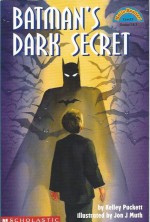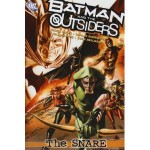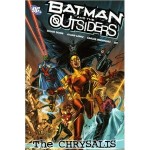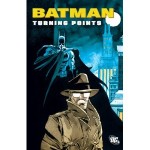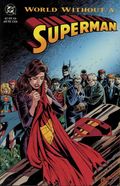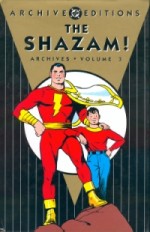
By Bill Parker, Rod Reed, C.C. Beck, George Tuska, Pete Costanza, Mac Raboy & others (DC Comics)
ISBN: 01-56389-832-2
One of the most venerated and beloved characters of America’s Golden Age of comics, Captain Marvel was created in 1940 as part of a wave of opportunistic creativity which followed the stunning success of Superman in 1938.
Although there were many similarities in the early years, the Fawcett champion quickly moved squarely into the area of light entertainment and even straight comedy, whilst as the years passed the Man of Steel increasingly left whimsy behind in favour of action, drama and suspense.
Homeless orphan and good kid Billy Batson was selected by an ancient wizard to be given the powers of six gods and heroes to battle injustice. He transforms from scrawny precocious kid to brawny (adult) hero Captain Marvel by speaking aloud the wizard’s acronymic name – invoking the powers of legendary patrons Solomon, Hercules, Atlas, Zeus, Achilles and Mercury.
Publishing house Fawcett had first gained prominence through an immensely well-received light entertainment magazine for WWI veterans named Captain Billy’s Whiz-Bang, before branching out into books and general interest magazines. Their most successful publication – at least until the Good Captain hit his stride – was the ubiquitous boy’s building bible Mechanix Illustrated and, as the decade unfolded, the scientific and engineering discipline and can-do demeanour underpinning MI suffused and informed both the art and plots of the Marvel Family titles.
Captain Marvel was the brainchild of writer/editor Bill Parker and brilliant young illustrator Charles Clarence Beck who, with his assistant Pete Costanza, handled most of the art on the series throughout its stellar run. At first the full-grown hero was a serious, bluff and rather characterless powerhouse whilst junior alter ego Billy was the true star: a Horatio Alger archetype of impoverished, bold, self-reliant and resourceful youth overcoming impossible odds by pluck, grit and sheer determination…
After homeless orphan newsboy Billy was granted access to the power of legendary gods and heroes he won a job as a roaming radio reporter for Amalgamated Broadcasting and first defeated the demonic Doctor Thaddeus Bodog Sivana, setting a pattern that would captivate readers for the next 14 years…
At the height of his popularity Captain Marvel outsold Superman and was even published twice-monthly, but as the Furious Forties closed tastes changed, sales slowed and Fawcett saw the way the wind was blowing. They settled an infamous long-running copyright infringement case begun by National Comics in 1940 and the Big Red Cheese vanished – as did so many superheroes – becoming little more than a fond memory for older fans…
This third magnificent deluxe full-colour hardback compendium re-presents a strip from anthology compendium America’s Greatest Comics, the second and third issues of Captain Marvel Adventures, his exploits from the fortnightly Whiz Comics #21-24 and also happily includes a selection of stunning covers from the plethora of extra and reprint editions generated by the Good Captain’s overnight success.
Although there was increasing talk of inevitable war amongst the American public; all these tales – spanning March to November 1941 – were created long before Japan’s attack on Pearl Harbor and consequently have their share of thinly-veiled saboteur and spy sagas which permeated the genre until official Hostilities were finally established. Of more interest perhaps is that at this period the stories – many of them still sadly uncredited – still largely portray Marvel as a grimly heroic figure not averse to slaughtering the truly irredeemable villain and losing no sleep over it…
Following a nostalgic and highly educational Foreword by movie producer, author, historian and fan Michael Uslan, the wonderment commences with the magnificent Mac Raboy cover to America’s Greatest Comics #1 and the C.C. Beck illustrated thriller ‘Ghost of the Deep’ which led off that issue.
The merits of the ongoing court-case notwithstanding, Fawcett undeniably took many of their publishing cues from the examples of Superman and Batman. Following on from a brace of Premium editions celebrating the New York World’s Fair, National Comics had released World’s Finest Comics; a huge, quarterly card-cover anthology featuring a host of their comicbook mainstays in new adventures, and early in 1941, Fawcett produced a 100-page bumper comic dedicated to their own dashing new hero and the other mystery-men in their stable: Spy Smasher, Bulletman, Minute Man and Mr. Scarlet & Pinky and others.
‘Ghost of the Deep’ was an extra-long saga and canny mystery wherein a hooded mastermind used purloined technology to wage a campaign of terror against American Naval interests on both coasts before Billy and the Captain scotched his plans in a tale very much the template for the character’s future…
Meanwhile in Captain Marvel Adventures #2 (Summer 1941) the hero was still undergoing some on-the-job cosmetic refinements. In those formative years as the World’s Mightiest Mortal catapulted to the first rank of superhero superstars, there was actually a scramble to fill pages and just as CMA #1 had been farmed out to up-and-coming whiz-kids Joe Simon & Jack Kirby, the next two issues were rapidly compiled by mostly anonymous scripters and another rising star who drew the issues in a hurry, working from Beck and Parker’s style guides.
Young George Tuska added a raw, lean humanist vivacity to the tales beginning with ‘World of the Microscope’ wherein Sivana returned and dosed Billy and erstwhile ally Queen Beautia with a shrinking solution and left them at the mercy of bacterial monsters until Captain Marvel turned the tiny tables on him, after which a deadly stampede of giant spider robots presaged an ‘Invasion from Mars’, until the Big Red Cheese taught our planetary neighbours a lasting lesson in getting along.
DC/National Periodical Publications had filed suit against Fawcett for copyright infringement as soon as Whiz Comics #2 hit the stands and the companies slugged it out in court until 1953 when, with the sales of superhero comics decimated by changing tastes, Captain Marvel’s publishers decided to capitulate.
As a result most merchandising outfits steered well clear of Fawcett, compelling the publisher to generate toys, games, premiums and promotions themselves. The only notable exception was the blockbusting Adventures of Captain Marvel Movie Serial from Republic Pictures. Consequentially Fawcett used their magazines comicbooks to promote the films and practically invented Product Placement to plug their in-house merchandise.
‘The Curse of the Scorpion’ was an uncredited text feature which recapped the first episode of the movie serial and urged readers to follow the saga at their local cinemas after which the strip thrills resumed with Tuska’s ‘The Pirate’s Treasure’ (written by Rod Reed) as Billy investigated the murder of an old sailor and was press-ganged onto a modern-day buccaneer’s boat. Before long the radio reporter and his mighty avatar were embroiled in a war between rival South Seas rogues and the issue rousingly concluded with the Reed & Tuska saga of ‘The Arson Fiend’, a murderous supernatural firebug who acted out the frustrations of his ineffectual fire-insurance salesman alter ego…
Captain Marvel Adventures #2 (Fall 1941) opened with ‘The Menace of Muscles McGinnis’ wherein the toughest gangster in town tried to take over Billy’s radio station and literally had the wickedness beaten out of him by the unbeatable Crimson Crime-crusher, after which he was again targeted by the World’s Maddest Scientist who wanted to conquer the USA with ‘Sivana’s Paralyzing Gas’…
‘The Terror of the Goptas’ saw an ancient cult attack tall buildings and their architects, but although the devotees were acting to defend their cloud-living gods their new leader had far more mundane motives… The issue ended with another Sivana scheme as the Devil Doctor devised a synthetic zombie powered by the life-force of 1000 animals but little dreamed that ‘The Beast-Ruler’ might have his own agenda, such as uniting all of nature to eradicate humanity…
Whiz Comics #21 (September 5th 1941) featured ‘The Vengeful Four’ (illustrated by Beck) and saw Sivana gather three other villains to attack the hero in his youthful identity. What luck then that three other kids named Billy Batson were in town and that the magic of Shazam apparently extended to them…
Fat Billy, Tall Billy and Hill Billy took to trouncing thugs in a trice and, as the Three Lieutenant Marvels, would become frequent guest stars in years to come…
Written and illustrated by Beck, #22’s ‘The Temple of Itzalotahui’ was a turning point for the series. Tying into and deriving from the continuity of the movie serial, Billy gained an assistant in the form of Whitey Murphy, who was a co-star in the film iteration, but the real sea-change was the shift to light-hearted, tongue-in-cheek adventure as the lads travelled to Central America to search for a third cast member and found ancient Mayans and modern resource raiders…
Whiz #23 began a two-part thriller that again derived from product placement. ‘The Bal Masque’ found Billy and Whitey travelling to Washington DC to safeguard an Ambassador and his daughter at a grand soiree. The diplomats were unwitting couriers for a new defence code and when ruthless German agents struck Captain Marvel was drawn into a twisted web of cross and double-cross which culminated in a blistering sea battle in ‘The Secret of the Ring’ (24th November 28th 1941, by Beck & Costanza)…
With the code lost the Solomon-inspired Marvel swiftly devised a new cipher, and from that issue onwards, readers could decode secret messages in every story… as long as they were fully paid-up members of the new Captain Marvel Fan Club…
This nostalgic delight concludes not only with pages of biographical details on all the creators but also a brace of covers from two unique reprint compilations rushed out to satisfy the voracious demands of the hero’s burgeoning readership. Captain Marvel Thrill Book sports a stunning piece of Beck brilliance whilst Xmas Comics #1 by Raboy is a slice of pure comicbook mythology every art lover dreams of possessing.
DC eventually acquired the Fawcett properties and characters and in 1973 revived the Captain for a new generation to see if his unique charm would work another sales miracle during one of comics’ periodic downturns.
Re-titled Shazam! due to the incontestable power of lawyers and copyright convention, the revived heroic ideal enjoyed mixed success before being subsumed into the company’s vast stable of characters…
Nevertheless Captain Marvel is a true icon of American comic history and a brilliantly conceived superhero for all ages. These magical tales again show why The Big Red Cheese was such an icon of the industry and proves that these timeless, sublime comic masterpieces are an ideal introduction to the world of superhero fiction: tales that will appeal to readers of any age and temperament…
© 1941, 2002 DC Comics. All Rights Reserved.


